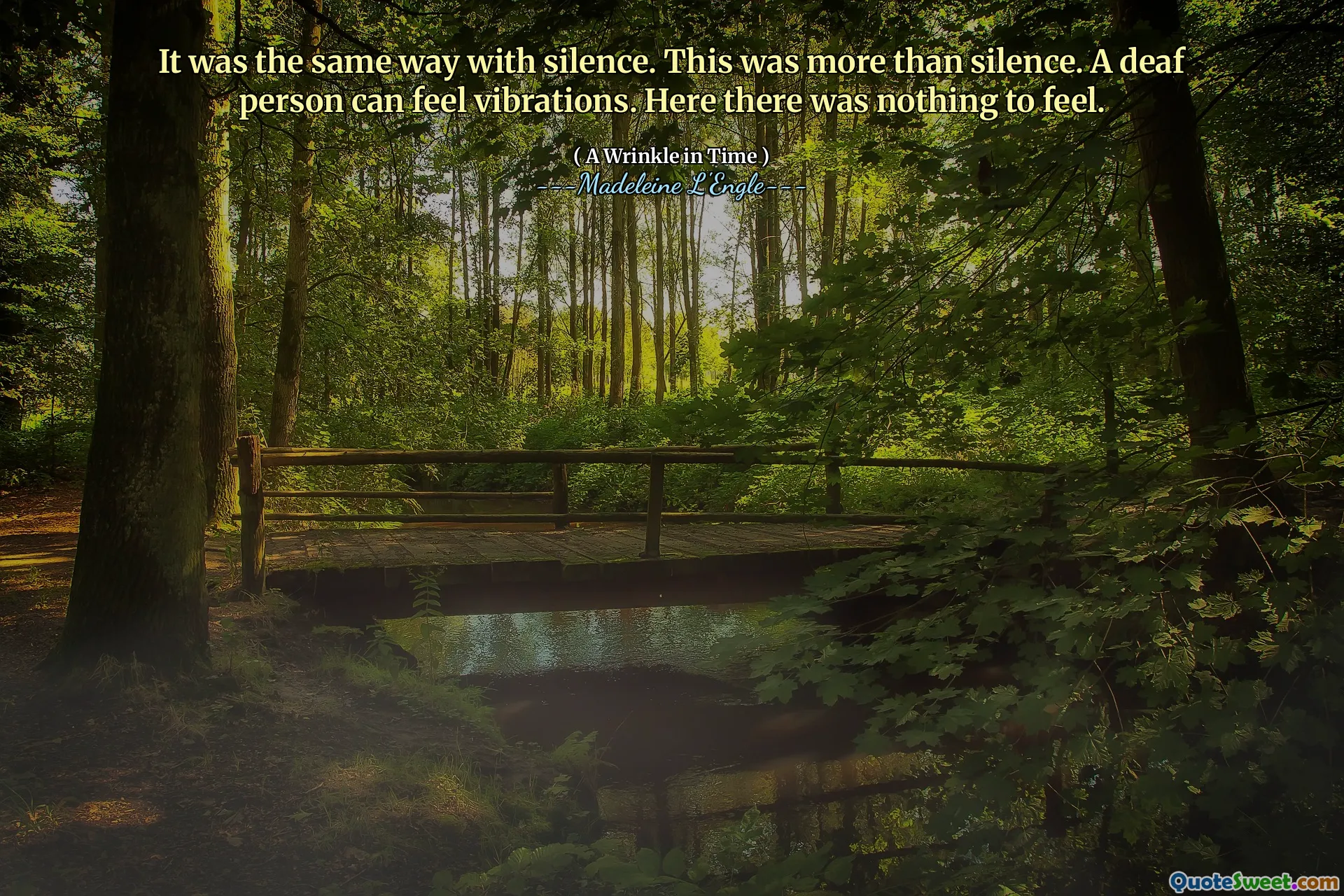
It was the same way with silence. This was more than silence. A deaf person can feel vibrations. Here there was nothing to feel.
This quote from Madeleine L'Engle's A Wrinkle in Time poignantly captures the essence of an overwhelming void, a silence so profound that it transcends ordinary stillness. It challenges the common perception of silence simply as the absence of sound. Instead, it reveals how we often find comfort or connection even in silence—like how deaf individuals can perceive presence and life through vibrations. The absence of even those intangible vibrations in the quote underscores a sense of isolation or emptiness that goes far beyond mere quietude.
Reflecting on this passage, it strikes me as a deep metaphor for emotional or existential numbness that many of us experience at some point. Silence, usually a respite, can become disconcerting when it is no longer accompanied by subtle signs of life, communication, or connection. This silence could symbolize a lack of hope, presence, or response, evoking feelings of alienation or loss. It's a reminder that silence is not always peaceful or healing but can, at times, be suffocating and deafening.
Moreover, the comparison to vibrations felt by someone who is deaf is particularly powerful. It emphasizes the human need to sense the world and be sensed, to share in mutual understanding even without words or sounds. The statement "Here there was nothing to feel" expresses an extreme form of emptiness where even this fundamental human connection is stripped away. This resonates with the book's broader themes of love, light, and the fight against darkness and despair. Silence in this context is more than the absence of noise—it is a symbol of complete disconnection, urging us to value the subtle currents of communication that sustain us emotionally and spiritually.









